Visiting the National Museum of Rural Life Scotland
Sometimes when you visit tourist attractions and go on days out, places don’t always live up to expectations. I think we expected a lot more from the National Museum of Rural Life in East Kilbride. We’d planned to visit on the way up to Glasgow on our roadtrip, but we didn’t have time before our Hampden Park tour. Instead we spontaneously decided to stop off there on our way back home.

The National Museum of Rural Life is in East Kilbride, Scotland. It’s not just a museum, but also has a farmhouse and working farm on site. These are split over 2 areas, with the museum where you first enter. There’s also a tea room and toilets, plus just over the road is the playground and picnic area.
For children there are also trails and maps to help them discover more around the site. These are free.
Museum of Rural Life
The museum itself is a modern building, and takes you through different areas showing rural life in Scotland from years ago.
First you can look down from the gallery over some of the old machinery and a mill mechanism. It was really interesting to see this outside of a working mill setting.
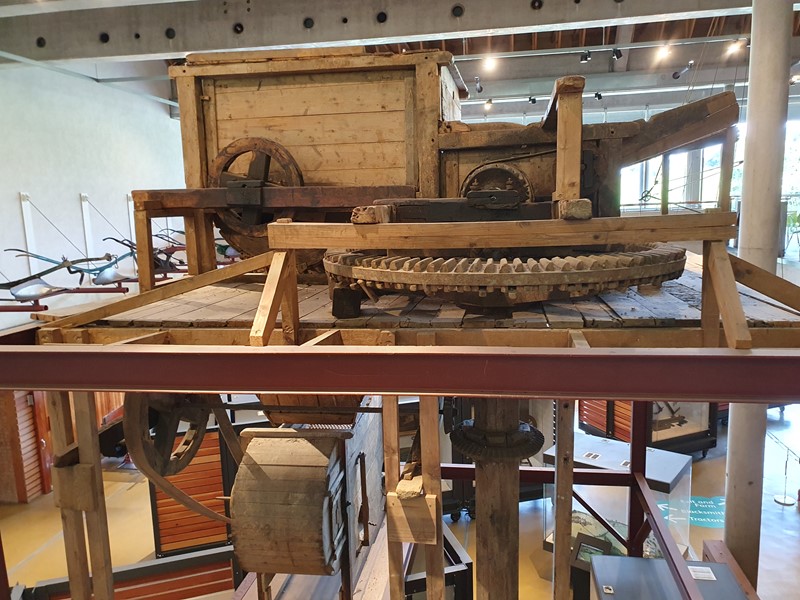

We could see into the storage rooms and all the extra equipment and tools they have stored away.
Then it was down to the equipment to see it up close. Of course the combine harvester was the first we headed to. There were interesting displays about the types of jobs rural people had on and off farm in the area. And the tools that they’d have used. It really helped bring the local area to life.

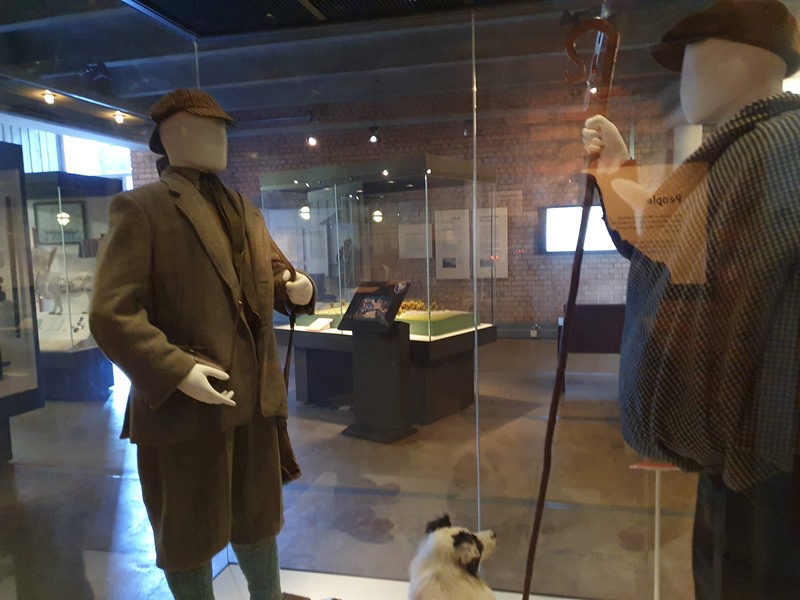
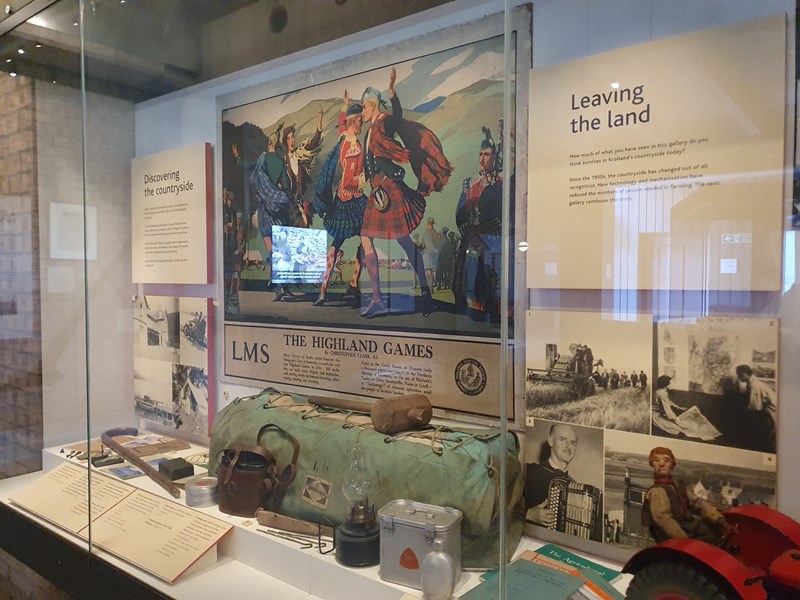
N decided he wanted to stop and watch the film that was running, but it was a bit abstract rather than informational at the point we sat down.
Around the people part of the displays we also found out about the displacement of lowlanders and highlanders from their land elsewhere – to cities or abroad. And how farming changed after those times.
Then it was time to see all the old machinery. In those areas, it’s a mishmash of old tractors, and then the old equipment. We spotted some tractors that looked in better condition than others, and some which we often see the same versions in country shows or tractor runs back home.
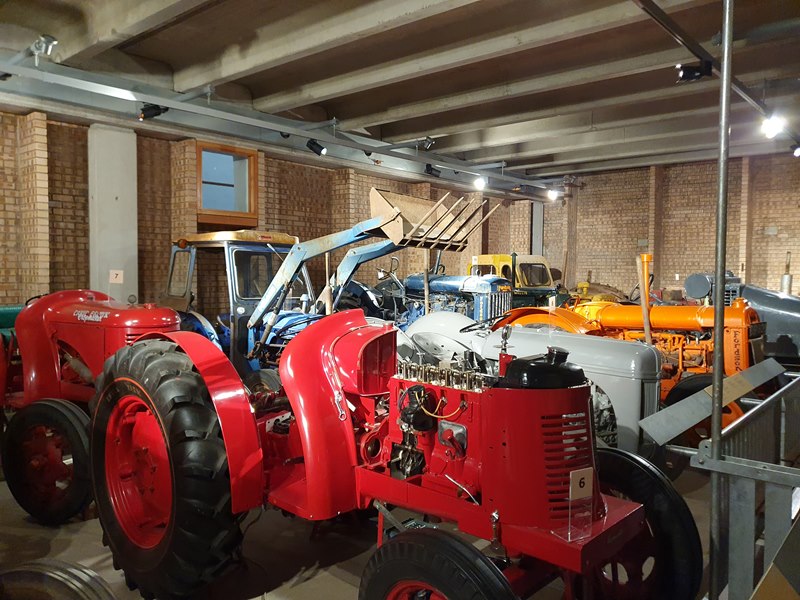
There’s also an old farriers/blacksmiths shop set up, along with a film talking to a blacksmith. We like when there’s a mix of static exhibits and videos. It’s great for older children used to watching videos all the time.
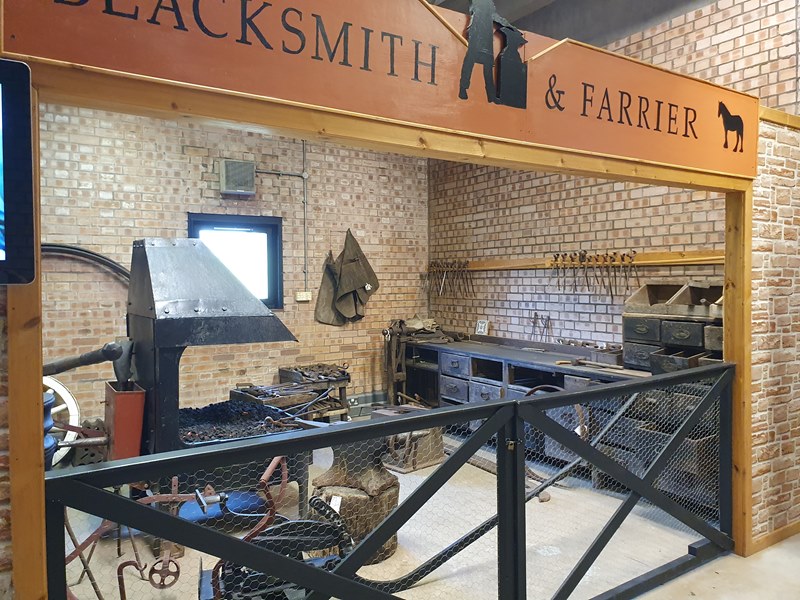
Outside, where the tractor ride turns around, there’s further machinery, but as we didn’t get tickets to get the tractor rid lift to the farmhouse, we decided to get going with our walk.
The tractor and trailer ride up to the house is included in the entry. A sign behind the ticket desk said it runs every half hour, but when we arrived it must have been really busy. We’d have had to wait 2 hours for the next available ride. It’s only ½ a mile walk, but a lot is uphill up a rough path. It feels longer, especially in the hot weather.
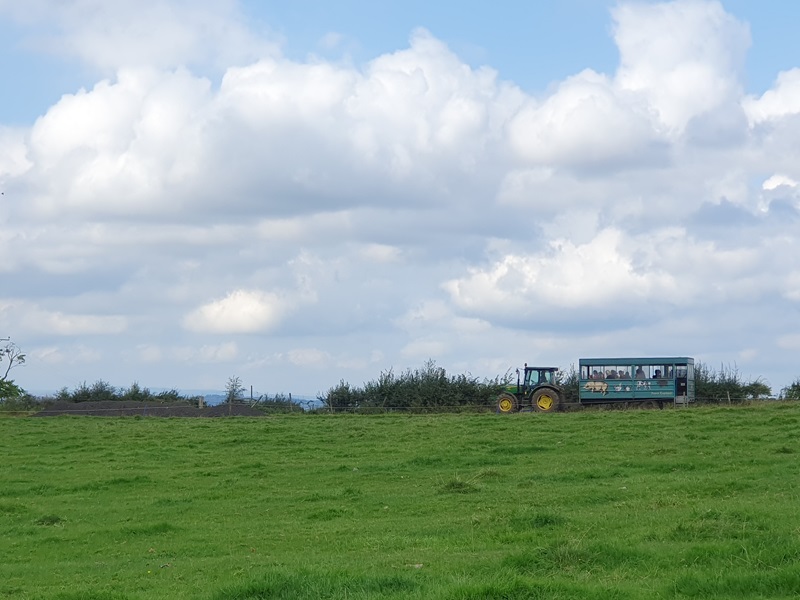
It’s a nice walk though, and when we returned there were people pushing buggies up there! Madness, but I suppose seeing the animals is why many people take their children to somewhere like the National Museum of Rural Life.
Along the way we got to see the countryside views – at the top you can see some way. There were also willow sculptures to look out for.
Farmhouse
The farmhouse was set up as it used to be before the last couple who lived there decided to pass the farmhouse onto the National Trust. (This confused us a bit as the museum isn’t a National Trust property).
N wasn’t that interested in the house at first, seeing the kitchen, living room and others.


But then he found all the displays of information about the farm’s history, and the family to created it and built it up over the generations. He sat reading about them and the farm for quite some time. How they changed the crops and animals over the years.
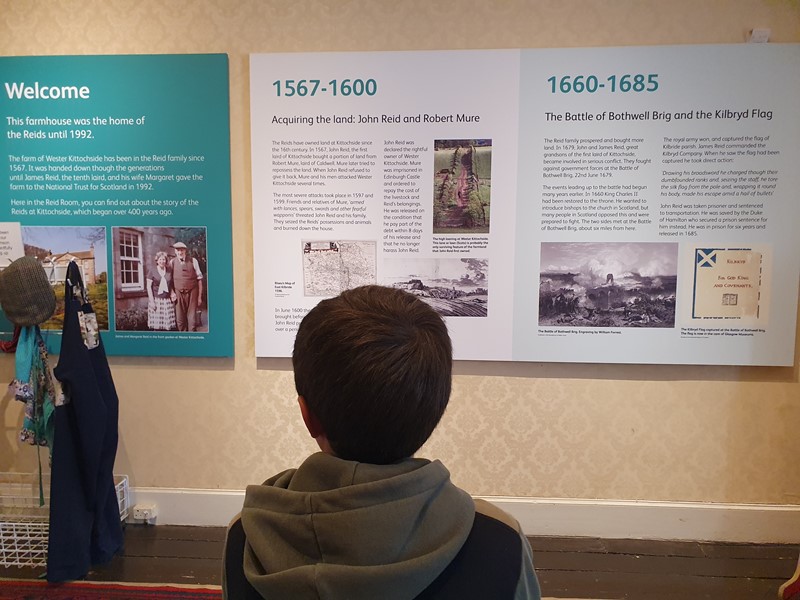
There was also some dressing up clothes in that room which is good to keep younger children entertained while adults read about the history.
The museum are very trusting as both inside the farmhouse, and around the animals we didn’t see anyone working there. It could have been helpful as outside we didn’t manage to find the pigs which we’d have liked to have seen.
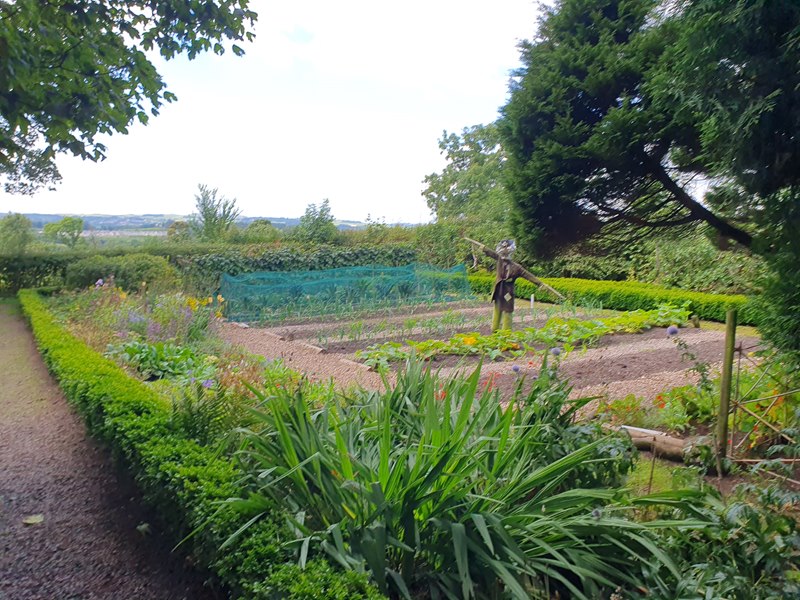
Farm animals
The farm is still a working farm, but with limited animals. There are a few Clydesdale horses. We met one in the stable who was very friendly to me, and a couple out in the field. I looked at a 2 newish calves, while N found some in another pen in the courtyard.
There were also chickens (and the mysterious pigs we couldn’t find when following the sign).
The other side of the lovely little garden we also found the highland cattle just over the hedge. I was pleased during our Scottish trip we did actually get to see some as we didn’t get up too far north.

We were interested to see the parlour as well, where they still do milking of Ayrshire cows. If you’re there at 3ish, between certain months of the year, you might get to view it as well.

We had a good stay of over 1 ½ hours, which included the 10-15 minute walk up the hill and back again. Wear comfy sturdy shoes if it’s busier season in case you need to make the walk rather than getting the tractor ride, because the path could get slippy. Also, use the toilets at the main museum as there
Visiting the National Museum of Rural Life
The parking at National Museum of Rural Life is plentiful, with an overflow carpark. It’s free.
While our expectations were maybe too high for this museum, there was a charm about it. There’s plenty of information to learn about, and things to see depending on your interest.
Add in a playground and it’s a good morning or afternoon out with younger children. The bonus is that it’s not that expensive – £10 for me and £7 for a child, although for some reason we got a discount and only paid £14.45. The tickets are also annual passes, so if you’re local you can revisit whenever you want through the year.
If you’re in the area and have young children, or just have an interest in finding out about Scottish farming history, then the National Museum of Rural Life is worth a visit.
We’ve also visited the Yorkshire Museum of Farming, read how we got on there.
